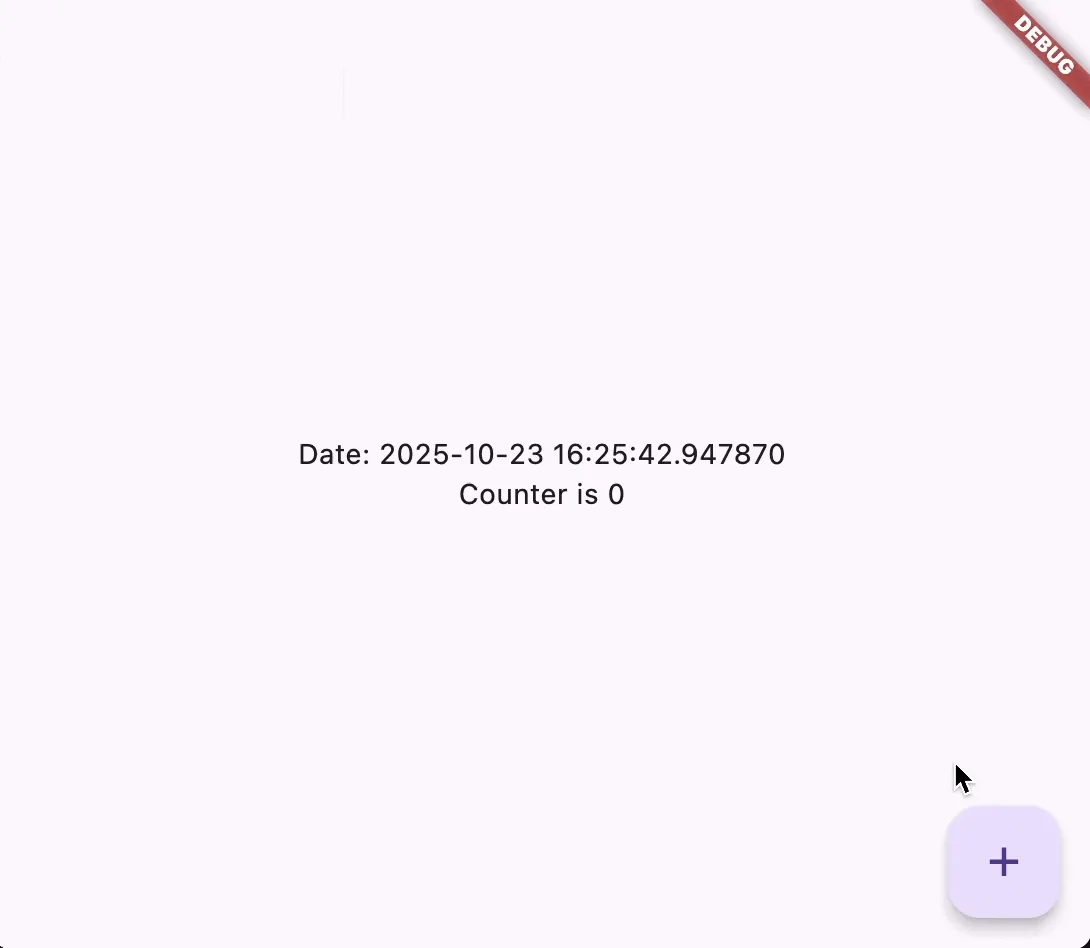Hi there!
A while ago I read this article about SwiftUI, which is called SwiftUI in 2025: Forget MVVM and I asked myself, “Why can’t we do the same in Flutter?”.
SolidFlutter is a small framework built on top of Flutter that makes creating apps easier and more enjoyable.
Forget about manual state management, ChangeNotifiers, ValueNotifiers, StreamBuilder, FutureBuilder and all that boring stuff.
With SolidFlutter, you can create responsive components with a simple and intuitive syntax, similar to SwiftUI.
Here is a simple example of a counter app using SolidFlutter:
import 'package:flutter/material.dart';
import 'package:solid_annotations/solid_annotations.dart';
class Counter extends StatelessWidget {
Counter({super.key});
@SolidState()
int counter = 0;
@override
Widget build(BuildContext context) {
return Scaffold(
body: Center(
child: Column(
mainAxisSize: MainAxisSize.min,
children: [
Text('Date: ${DateTime.now()}'),
Text('Counter is $counter'),
],
),
),
floatingActionButton: FloatingActionButton(
onPressed: () => counter++,
child: const Icon(Icons.add),
),
);
}
}You get this result, with real fine-grained reactivity:

As you can see, the DateTime.now() text does not update when the counter changes, only the Counter is X text updates. This is because SolidFlutter tracks which parts of the UI depend on which state, and only updates those parts when the state changes, without any manual work from you.
Why you don’t need MVVM anymore
Your widgets are the most important part in SolidFlutter. They are the heart of your app, and they can hold state directly.
This means you don’t need to create separate ViewModel classes to manage state.
With SolidFlutter, you can keep your state and UI logic together in the same place, making your code easier to read and maintain.
In addition, with @SolidEnvironment you can easily share state between widgets without the need for complex dependency injection frameworks. For example you can have the following Counter class:
class Counter {
@SolidState()
int value = 0;
}and, after providing it from a parent widget, you can access it in any child widget like this:
class MyWidget extends StatelessWidget {
MyWidget({super.key});
@SolidEnvironment()
late Counter counter;
@override
Widget build(BuildContext context) {
return Text('Counter is ${counter.value}');
}
}Think a bit about how much boilerplate code and complexity you can eliminate from your Flutter apps by using SolidFlutter.
If this sounds interesting, check out the Getting Started Guide to learn how to set up SolidFlutter in your Flutter project!